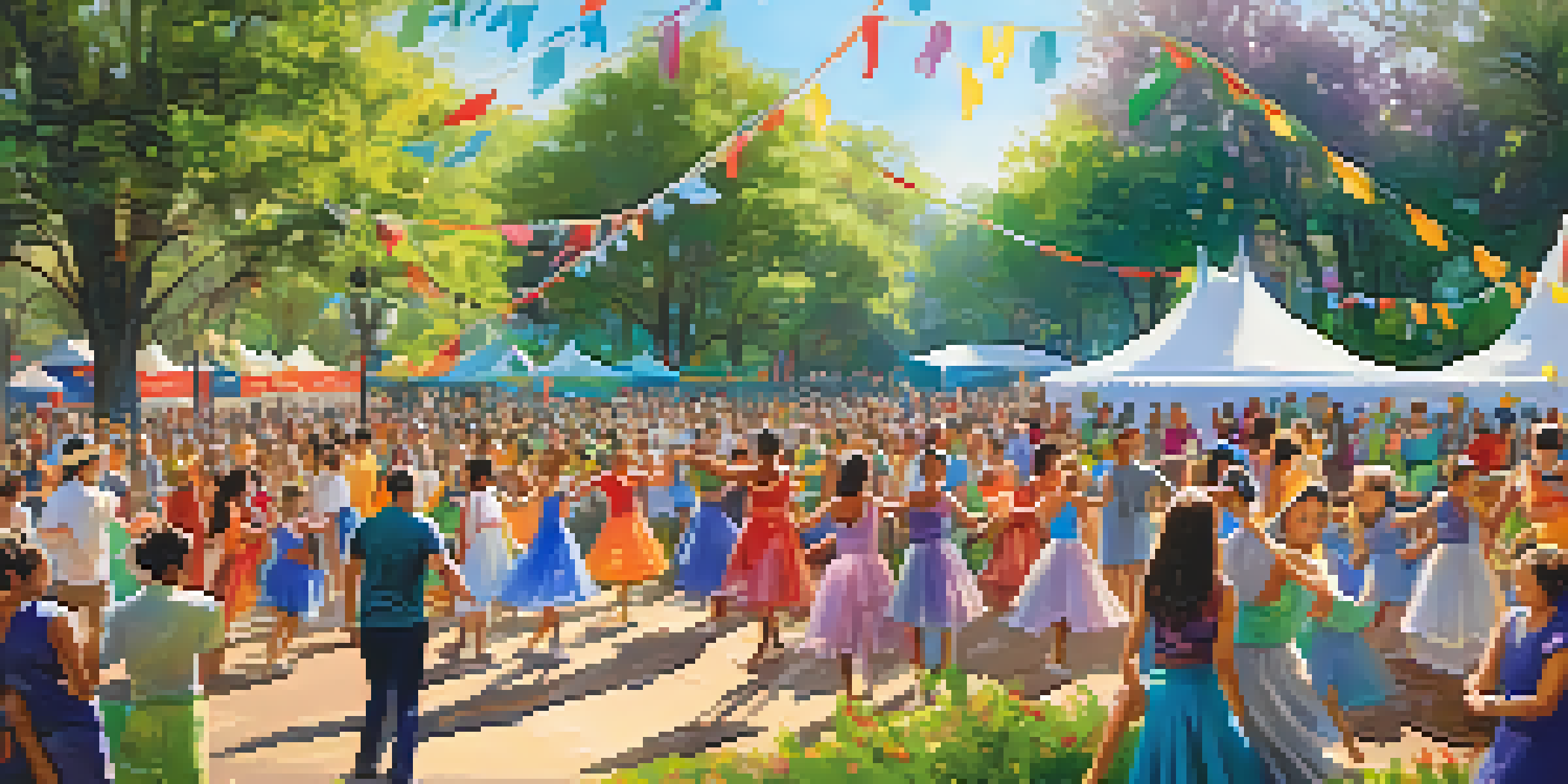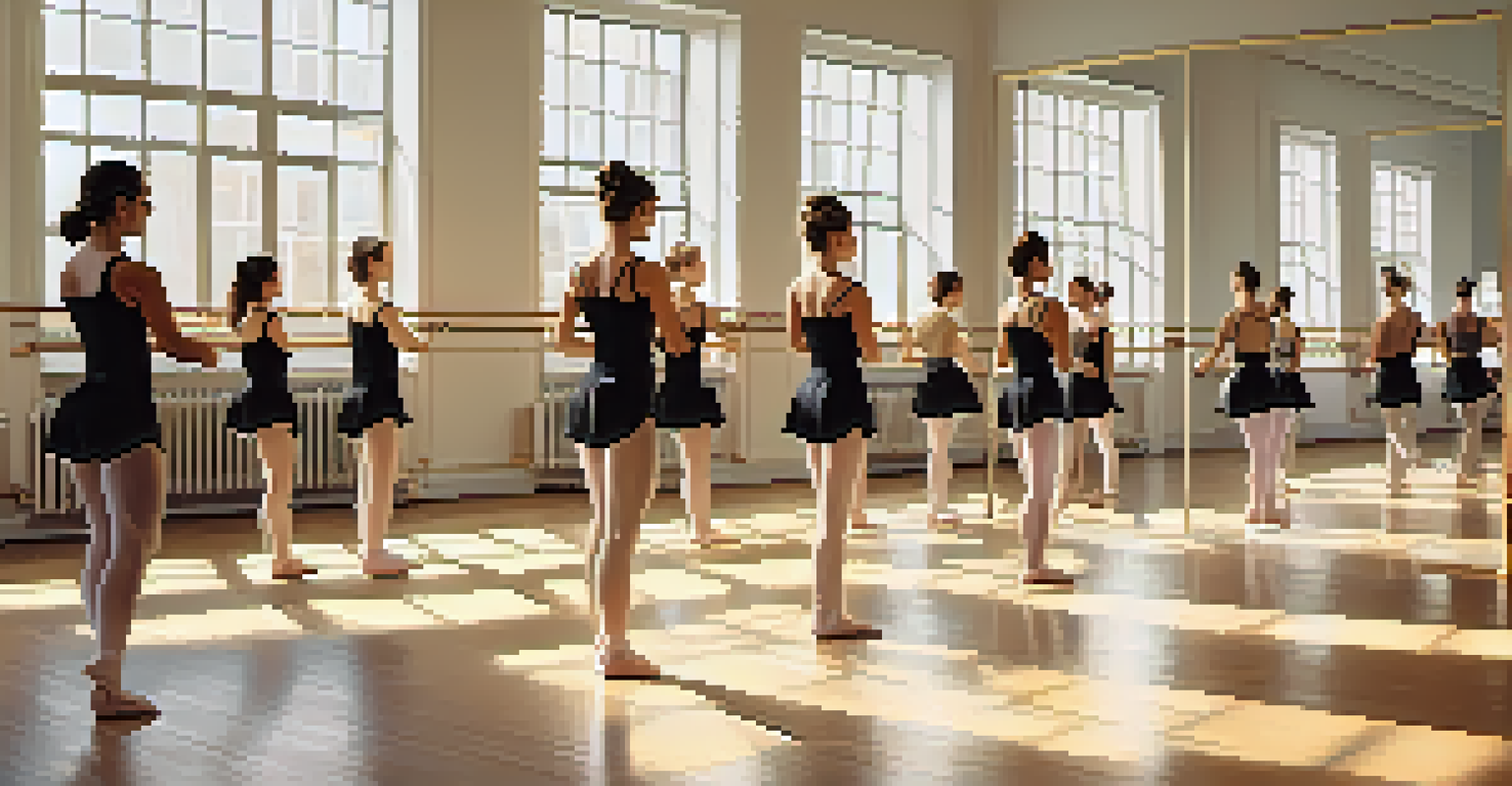Impact of Local Policies on Community Dance Programs Funding

Understanding the Role of Local Policies in Funding
Local policies play a crucial role in determining how community programs are funded. They can create a framework that either supports or hinders funding opportunities for initiatives like dance programs. A community's values and priorities, reflected in these policies, significantly influence the resources allocated to the arts.
Art is not a thing; it is a way.
For instance, a city council that prioritizes cultural development may allocate more budget to community dance programs. Conversely, if local policies favor other sectors, dance initiatives might struggle to secure necessary funds. Understanding these dynamics is essential for anyone involved in community arts.
In essence, local policies serve as the backbone of funding decisions, shaping the landscape for community dance programs. They not only impact financial support but also determine the sustainability and growth potential of these programs over time.
Impact of Budget Allocations on Dance Programs
Budget allocations directly affect the viability of community dance programs. When local governments decide to allocate funds to the arts, they open doors for various initiatives, including dance classes and performances. These budget decisions can make or break a community's ability to nurture its artistic talents.

For example, a community with a dedicated arts budget can sponsor workshops, hire experienced instructors, and even host local performances. These activities not only build skills but also foster community spirit. On the other hand, without adequate funding, programs may face cuts or even complete shutdowns.
Local Policies Shape Dance Funding
Local policies significantly influence the allocation of resources for community dance programs, determining their sustainability and growth.
Thus, budget allocations are not just numbers on a spreadsheet; they represent opportunities for growth, connection, and cultural enrichment within the community. The decisions made at the local level ripple through the community, impacting lives in profound ways.
The Influence of Community Engagement on Funding
Community engagement is a vital factor that can influence funding for dance programs. When community members actively participate in or advocate for local dance initiatives, their collective voice can lead to increased visibility and support. This engagement often highlights the importance of such programs to local policymakers.
The arts are an essential part of a complete education.
For example, if a community organizes a dance festival that attracts significant attendance, it can demonstrate to local officials the program's popularity and value. As a result, policymakers may feel more inclined to allocate funds to support these initiatives. Engaged communities can create a powerful narrative that illustrates the impact and need for dance programs.
In short, active community participation not only enriches the dance experience but also strengthens the case for funding. When residents rally behind their local programs, they can influence policy decisions that ultimately shape the future of community dance.
Challenges Faced by Community Dance Programs
Community dance programs often face several challenges, particularly when it comes to securing funding. These challenges can stem from shifting local policies, competing priorities, and limited budgets. Additionally, smaller programs may struggle to make their voices heard amidst larger organizations vying for funds.
For instance, a local dance troupe might have a passionate following but still find it difficult to compete with more established arts organizations. This can lead to a cycle where only the most visible programs receive support, leaving smaller initiatives to fend for themselves. Such disparities can stifle creativity and limit opportunities for emerging artists.
Community Engagement Boosts Support
Active community participation in dance initiatives can enhance visibility and lead to increased funding from local policymakers.
Recognizing these challenges is the first step toward developing effective strategies for securing funding. By understanding the landscape, community leaders can advocate more effectively for the resources needed to sustain and grow dance programs.
Success Stories: Communities Thriving Through Dance Funding
Many communities have successfully leveraged local policies to enhance funding for dance programs, leading to vibrant cultural landscapes. These success stories often involve proactive engagement with local governments and stakeholders. For example, a community that initiated a 'Dance for All' campaign gained funding and support, ultimately increasing participation in dance activities.
In another instance, a local council implemented policies that prioritized funding for youth arts programs, resulting in increased access to dance education. These initiatives not only fostered creativity but also improved community cohesion, showing the far-reaching benefits of investing in the arts.
These success stories serve as inspiration for other communities looking to bolster their dance programs. They illustrate how effective advocacy and strategic partnerships can create sustainable funding opportunities, enriching the local cultural fabric.
The Role of Nonprofits in Supporting Dance Programs
Nonprofit organizations often play a pivotal role in supporting community dance programs, especially when local funding falls short. These organizations can provide grants, resources, and expertise that are crucial for sustaining dance initiatives. They often partner with local governments to fill the funding gaps left by fluctuating budgets.
For example, a nonprofit dedicated to arts education may offer scholarships for underprivileged children to participate in dance classes. This not only enriches the community but also ensures that dance remains accessible to all. By collaborating with local officials, nonprofits can advocate for policies that promote the arts.
Nonprofits Fill Funding Gaps
Nonprofit organizations play a crucial role in supporting community dance programs by providing essential resources and advocating for funding.
In essence, nonprofits act as a bridge between community needs and available resources. Their commitment to supporting dance programs can lead to innovative solutions and sustained funding, benefitting the community at large.
Future Directions: Policy Changes for Enhanced Funding
Looking ahead, there is a pressing need for policy changes that enhance funding for community dance programs. Advocating for increased budget allocations and supportive policies can create a more favorable environment for the arts. Stakeholders must work together to push for reforms that recognize the value of dance within the broader cultural landscape.
For instance, communities can lobby for dedicated funding streams for the arts or initiatives that promote inclusivity in dance education. By highlighting the positive impacts of dance on community well-being, stakeholders can make a compelling case for increased financial support. Engaging in dialogue with policymakers is crucial to driving these changes.

Ultimately, the future of community dance programs hinges on proactive advocacy and policy reform. By aligning local policies with community needs, we can ensure that dance continues to thrive and enrich our lives.